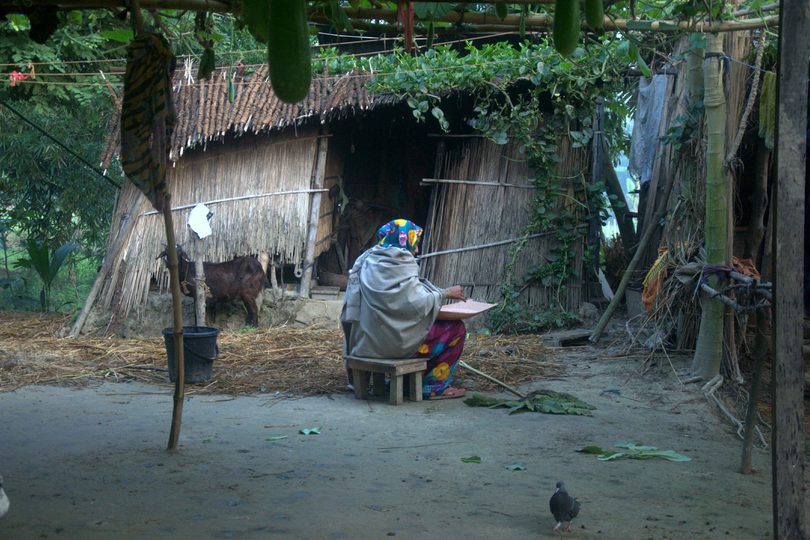
With around 700 million people globally living on less than $2 per day, there is an urgent international agenda to eliminate extreme poverty. The Ultra-Poor Graduation (UPG) approach, first launched by the international development organisation BRAC in the early 2000s, has emerged as a powerful and proven strategy to address this issue.
UPG provides beneficiaries with a comprehensive package of resources beyond mere cash transfers, embodying the principle of ‘teaching a person to fish’ rather than simply ‘handing them the fish.’ This multifaceted intervention has consistently demonstrated substantial improvements in both economic and social well-being, offering a viable pathway out of extreme poverty. Despite its proven effectiveness, the widespread adoption and scaling of UPG programmes face considerable challenges, necessitating a focused effort to understand and overcome these obstacles.
There is an ongoing debate about the most effective approach to poverty alleviation: Ultra-Poor Graduation (UPG) programmes versus cash transfers. Cash transfers provide immediate financial relief but often lack the comprehensive support needed for sustained economic stability. In contrast, UPG programmes can offer a holistic set of interventions including asset transfers, skills training, and mentorship, arguably leading to more durable outcomes. While UPG programmes require more effort, time, and resources, they have demonstrated superiority over simple cash transfers in building long-term economic stability and resilience against economic and climate-related shocks. Initiatives like the World Bank's Partnership for Economic Inclusion (PEI) are scaling up UPG programmes, showcasing their potential to be cost-effective and replicable across various contexts.
Small is beautiful, but big is necessary...we have to find ways to find ways to scale an approach that we know works, and we think governments are central to that.
Research across multiple countries and regions has shown significant long-term gains for UPG participants in terms of income, assets, savings, food security, well-being, and health. For example, a study by the BRAC Institute of Governance and Development and London School of Economics on BRAC’s UPG programme in Bangladesh found that participants who had started the graduation programme 13 years earlier and escaped the poverty trap were more likely to have salaried jobs or be self-employed than to work as casual labourers. This transition provided them with greater job security despite the impacts of the COVID-19 pandemic. In Kenya, The BOMA Project’s Graduation Program participants had five times more savings, more than three times as many productive assets, and 32 percent higher income compared to nonparticipants. These outcomes highlight the potential of UPG programmes to create sustainable and resilient economic advancement for the poor while driving deep-rooted behavioural change.
As part of our role in contributing to improving livelihoods and resilience in low- and middle-income countries, the Oxford Martin Programme on the Future of Development held a roundtable discussion focused on the adoption and scaling of the UPG approach by bringing together a panel of experts from the Bill and Melinda Gates Foundation, BRAC International, Village Enterprise, and The/Nudge Institute. It was moderated by Oxford Martin Fellow Dr Mahreen Khan, who is conducting research measuring the impact of a government-led cash plus economic inclusion programme in Sierra Leone. Together they did a deep dive into the critical factors hindering UPG’s expansion, identified and dissected the bottlenecks to scaling, and outlined the necessary steps to accelerate adoption.

From left to right - Dianne Calvi (Village Enterprise), Claire Hutchings (BRAC), Diva Dhar (Gates Foundation), Atul Satija (The/Nudge Institute), Mahreen Khan (Oxford Martin School)
Scaling UPG programmes involves addressing several key considerations, including cost-effectiveness, replicability, engaging with local governments and the needs of vulnerable populations such as youth and women.
‘One of the things often said within BRAC is that small is beautiful, but big is necessary... we have to find ways to find ways to scale an approach that we know works, and we think governments are central to that,’ said Claire Hutchings, Director of Monitoring, Evidence and Learning at BRAC International.
Cost-effectiveness is critical, particularly given the large upfront costs typically associated with UPG programmes. Studies have shown that UPG programmes in various countries often result in benefits that outweigh their costs, indicating their economic viability. One study documenting UPGs in six countries spread between Africa, South Asia and South America reports that five of the six UPG programmes’ costs are less than the additional earnings raised by programme recipients. Another study finds the (monetary) benefits of UPG programmes outweigh their costs. Hence, UPG programmes seem to be worth their price. Their value also extends far beyond their monetary benefits, such as improving the mental health of recipients.
Integrating UPG into existing government programmes means leveraging existing resources which allows for a most cost-effective programme in the long run.
There are several techniques that have been adopted to make UPGs more universally scalable at lower cost. For example, the Village Enterprise has provided smaller cash transfers instead of asset transfers; implemented shorter duration programmes and conducted coaching and mentoring in groups rather than individually. Similarly, The/Nudge Institute has seen notable rewards from simplifying scaled UPG designs and utilizing cost-reducing digital technologies.
Another critical factor for the successful scaling of UPG programmes is the engagement of national governments. Governments with the support of organisations such as our roundtable participants have the capacity and responsibility to lead evidence-based poverty alleviation efforts. For example, The/Nudge Institute has demonstrated initial success by integrating scaled UPG programmes within the social protection framework in India.
‘Integrating UPG into existing government programmes means leveraging existing resources which allows for a most cost-effective programme in the long run,’ said Atul Satija, CEO of The/Nudge Institute
As Diva Dhar, Deputy Director of Women’s Economic Empowerment at the Bill and Melinda Gates Foundation, notes, successful scaling up of UPG programmes necessitates addressing the specific needs of vulnerable populations, particularly youth and women. These groups often face unique challenges that can hinder their ability to benefit fully from such programmes. For instance, in Ethiopia, the government’s Productive Safety Net Program (PSNP) includes a graduation model that specifically targets women, providing them with tailored training and resources to overcome social and economic barriers. This approach has led to significant improvements in women's income and food security.
Similarly, Hutchings described the ability of UPGs to address intersectional development challenges. In fact, in Bangladesh, BRAC's UPG programme includes specific interventions for adolescent girls such as life skills training and educational support that have resulted in higher school retention rates and improved economic prospects. By focusing on the distinct requirements of these vulnerable populations, UPG programmes can enhance their effectiveness and ensure more inclusive and sustainable poverty alleviation.
‘Looking at women’s empowerment, and agency, and decision making – not only in the outcomes of the [UPG] programmes but also in the design itself [is a key Gates Foundation priority],’ added Dhar.
Hence, the verdict is in. The opportunity that scaled UPGs offer to alleviate poverty far exceeds the costs of these programmes, especially in the long run.
This opinion piece reflects the views of the author, and does not necessarily reflect the position of the Oxford Martin School or the University of Oxford. Any errors or omissions are those of the author.


